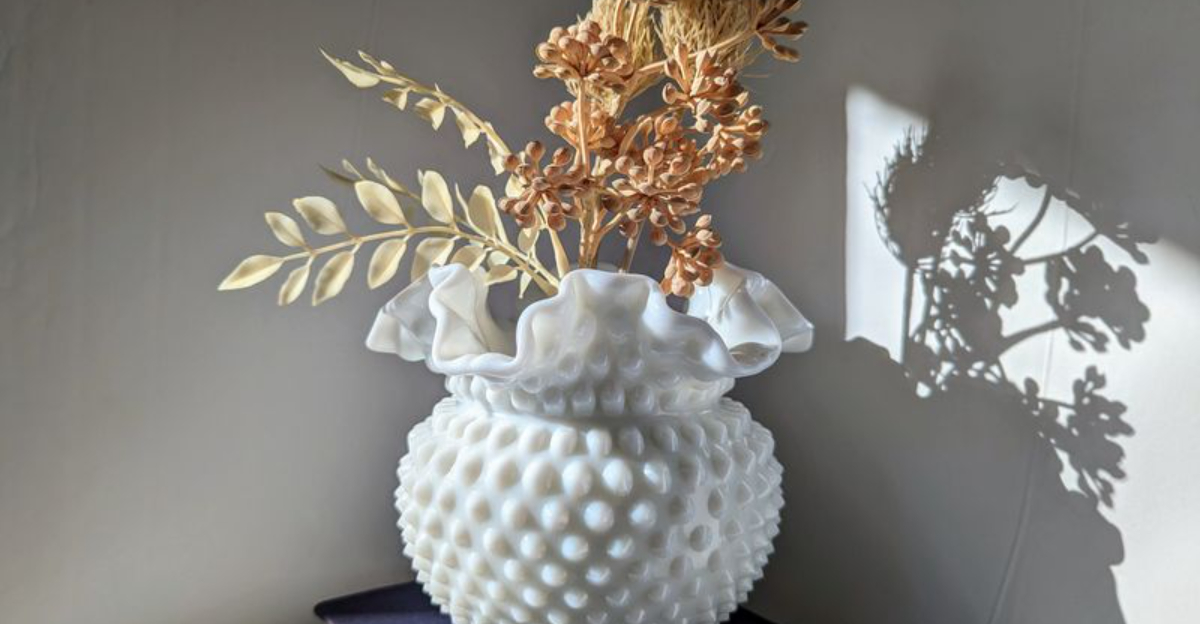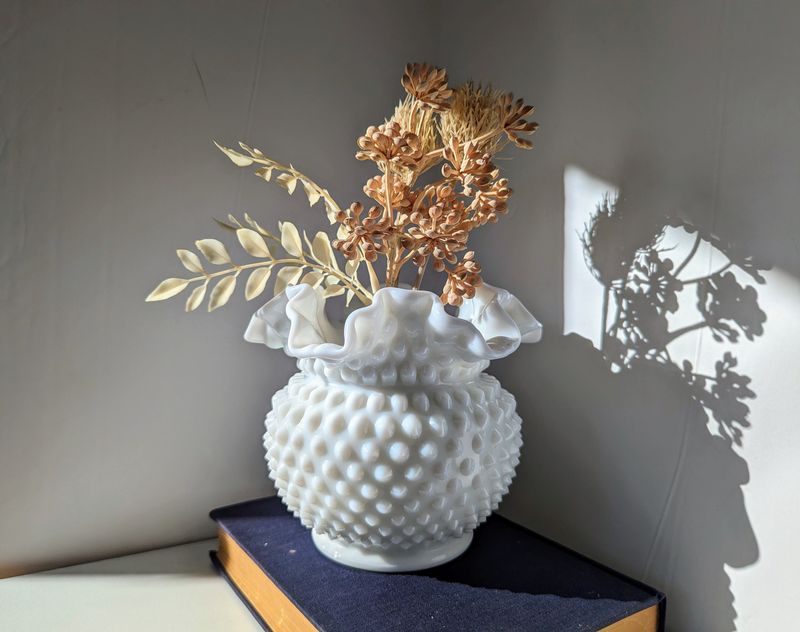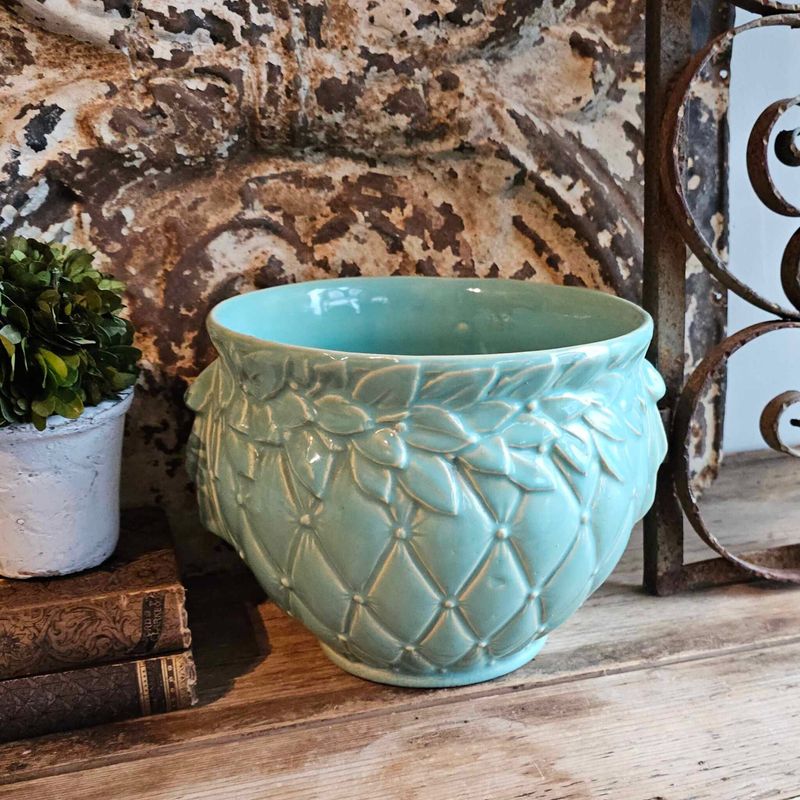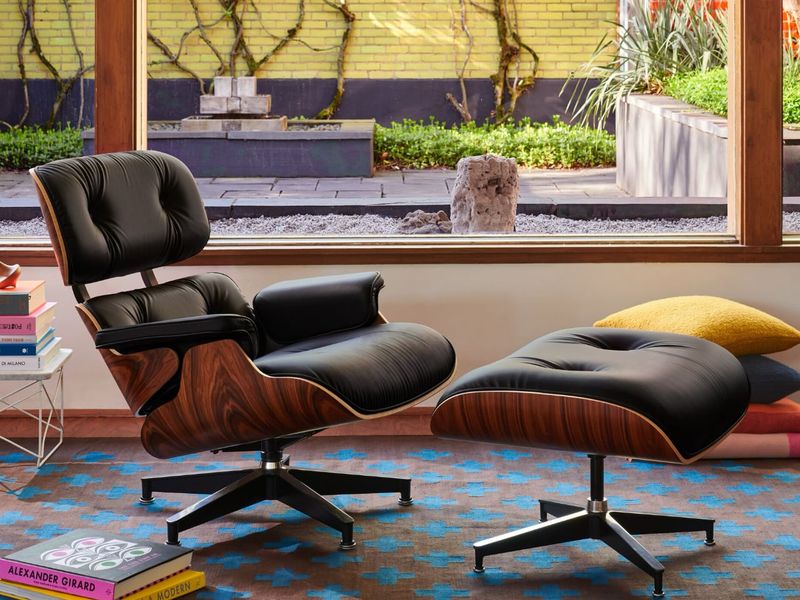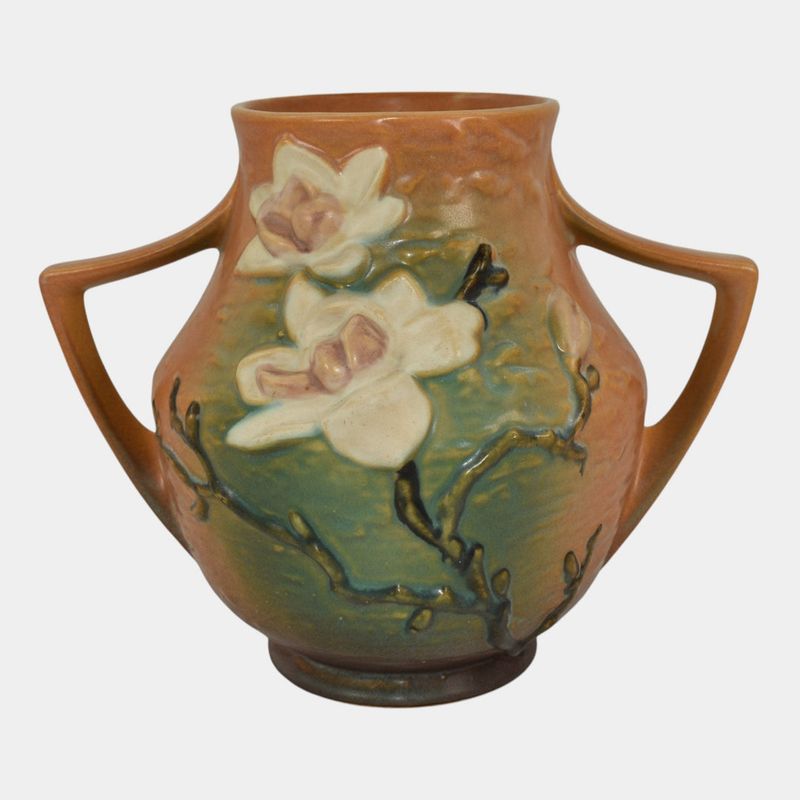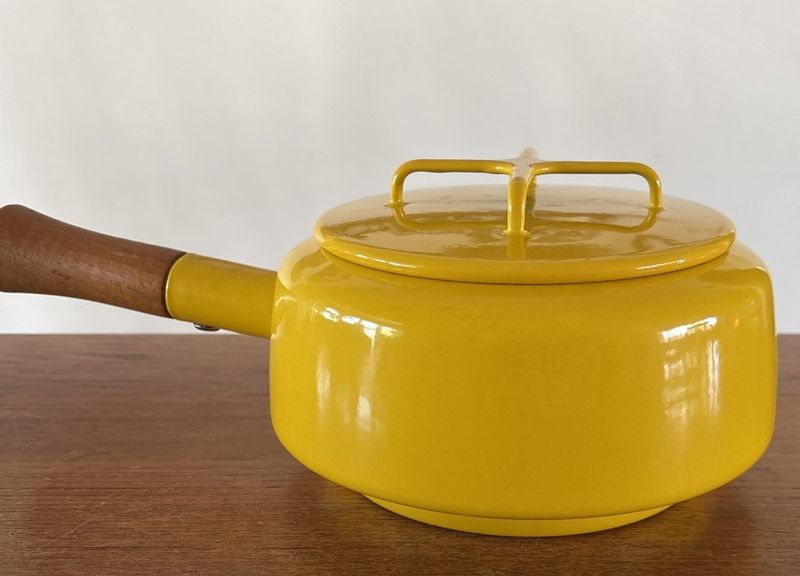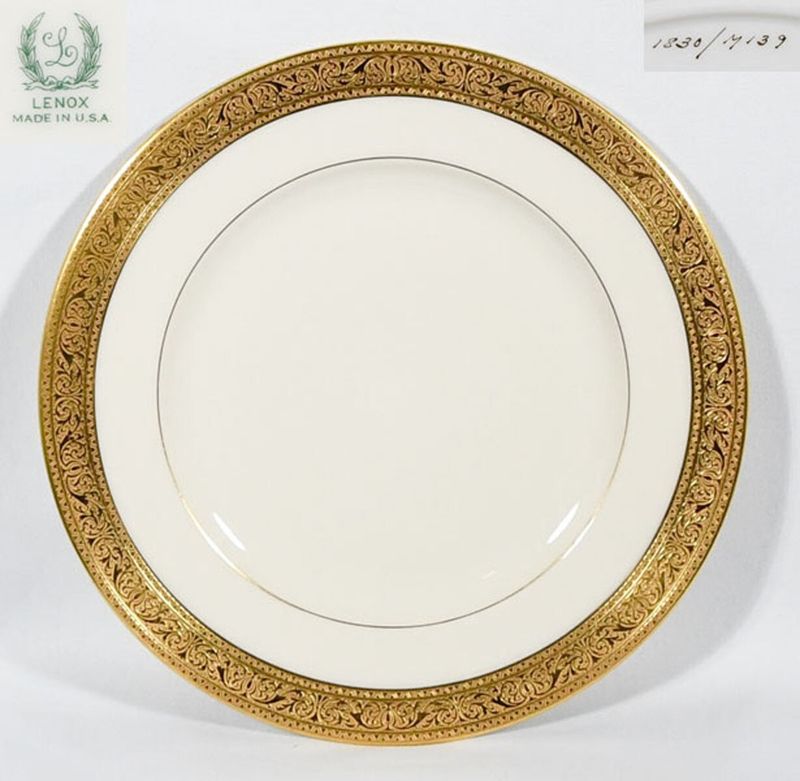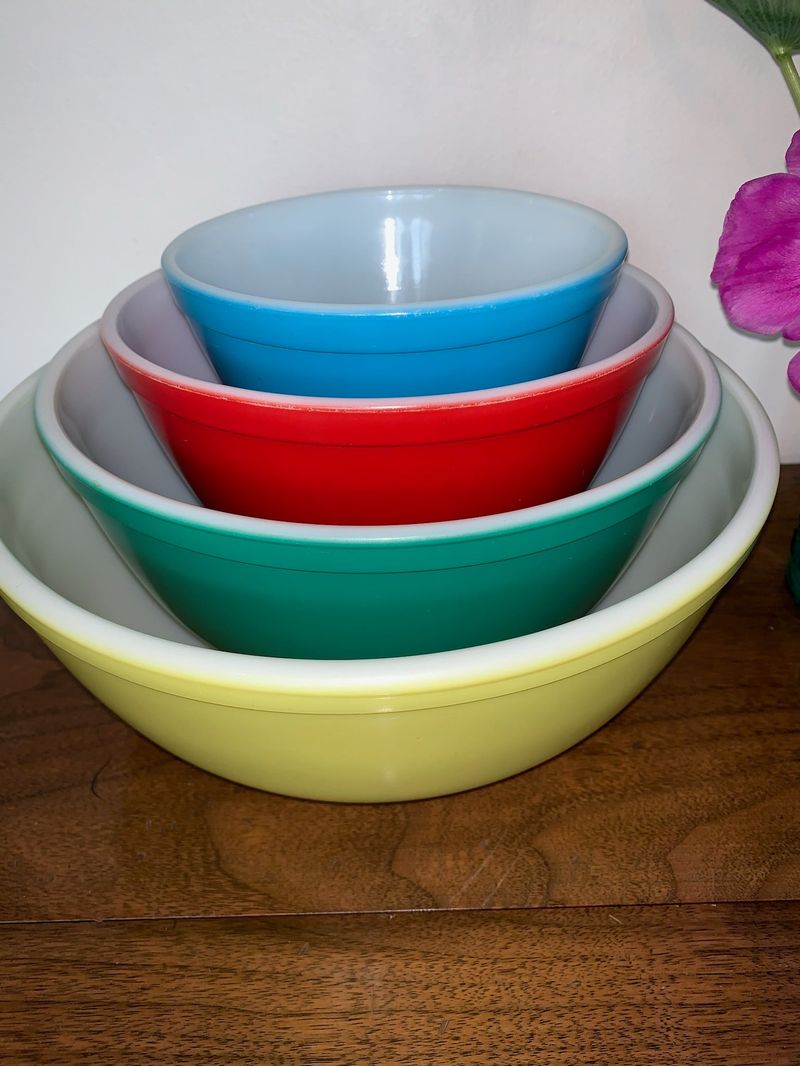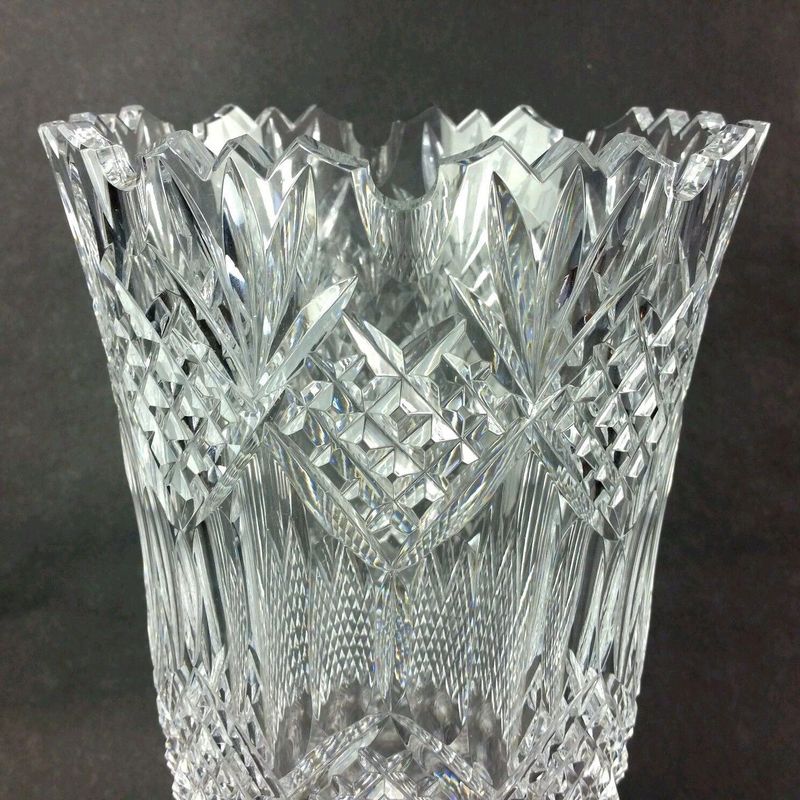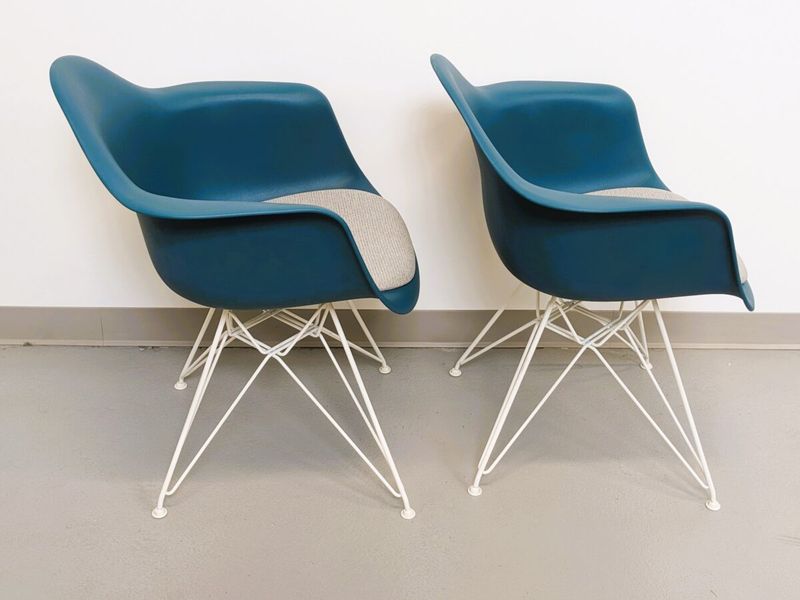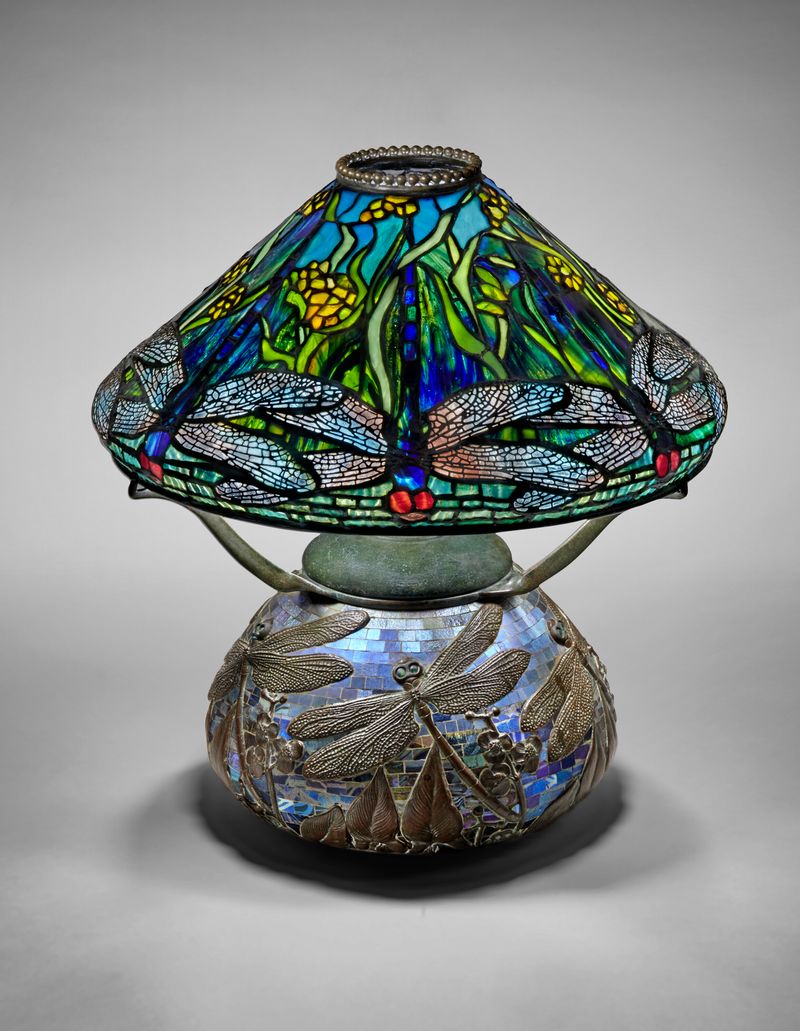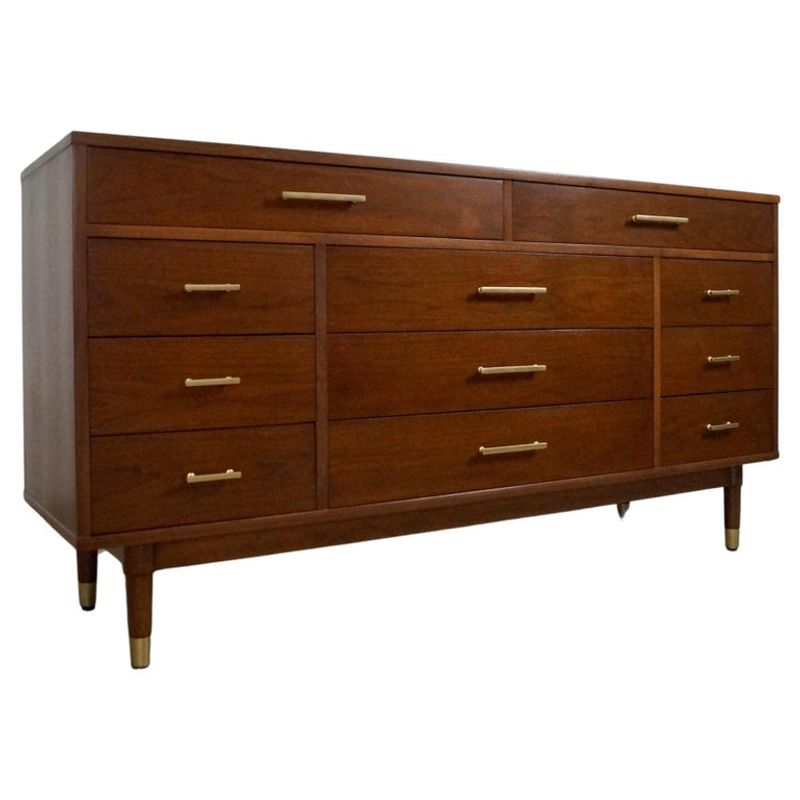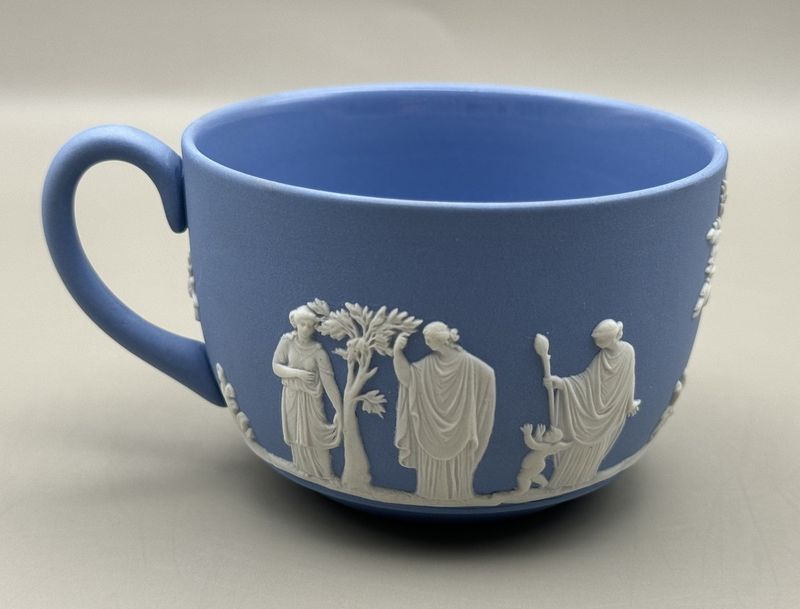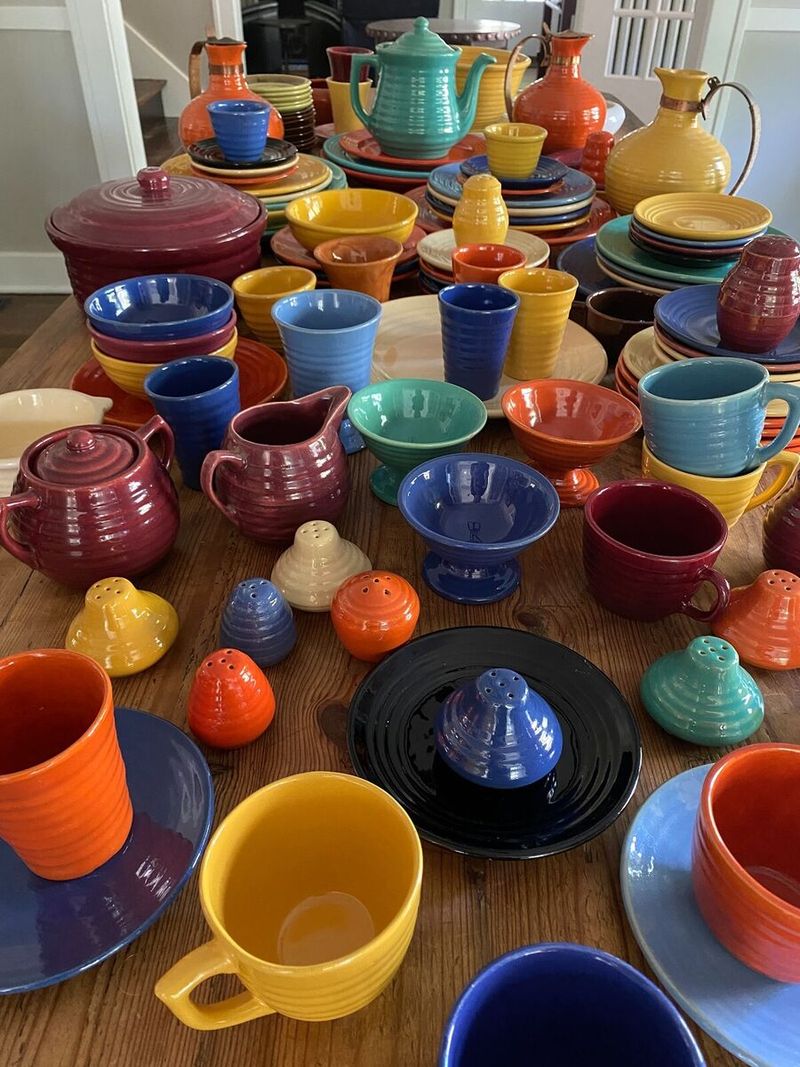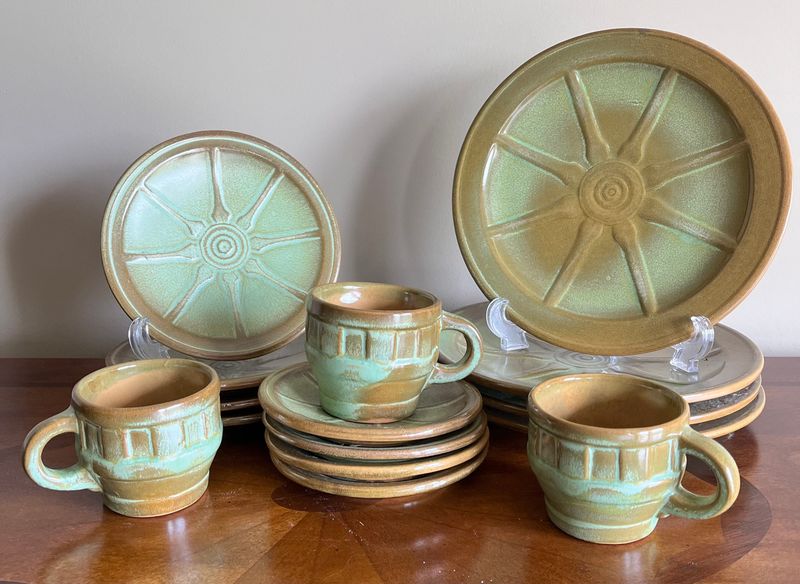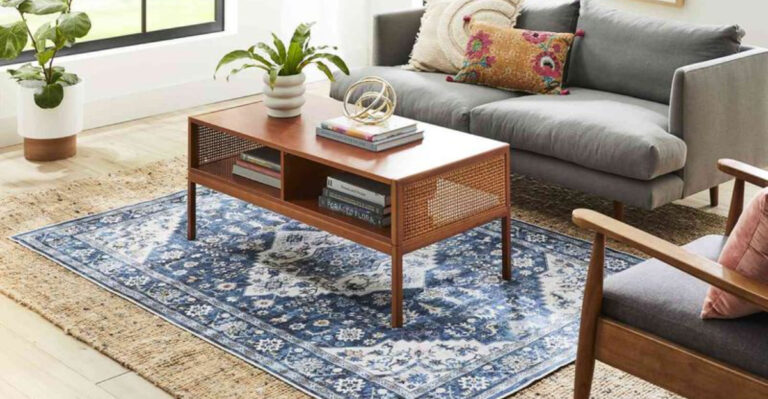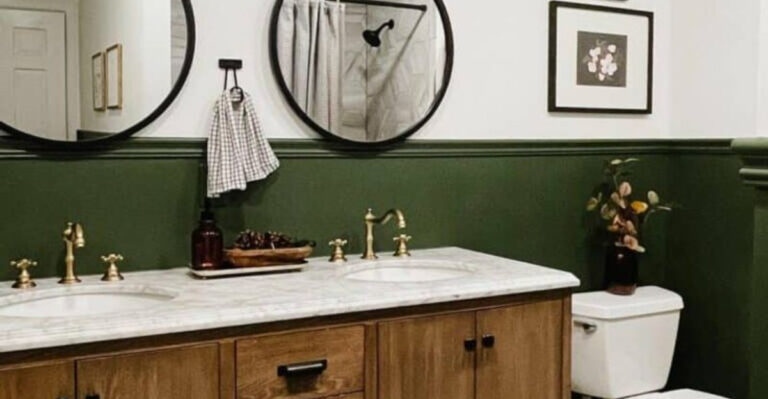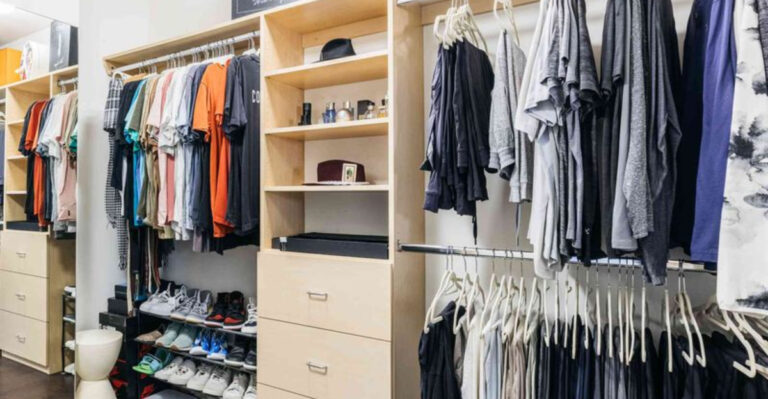19 Brands You Should Always Look For While Thrifting And Antiquing
Treasure hunting at thrift stores and antique shops can transform your home without breaking the bank.
The real magic happens when you spot those special brands that hold their value or even appreciate over time.
Knowing which labels to look for can turn a casual browsing session into a goldmine of stylish, quality finds that will make your friends wonder where you got such amazing pieces.
1. Fenton Glass
Spotting that distinctive Fenton mark on the bottom of a glass piece feels like striking gold! The company’s hand-crafted artistry has been captivating collectors since 1905.
Their colorful hobnail patterns and delicate milk glass creations stand out in any collection. Look for their signature sticker or etched logo to ensure authenticity.
Even smaller Fenton pieces can fetch impressive prices, making them perfect investments for both beauty and potential resale value.
2. McCoy Pottery
Walking through a thrift store and spotting McCoy’s earthy tones is enough to make any collector’s heart skip a beat. Founded in 1848, this American pottery company created pieces that perfectly balance functionality with artistic flair.
Their cookie jars, planters, and vases feature distinctive glazes that have become instantly recognizable to enthusiasts. The market for McCoy continues to thrive among serious collectors.
3. Herman Miller
Spotting those sleek, organic lines of a Herman Miller piece peeking out from a jumble of furniture is enough to make design lovers weak in the knees. Since 1923, this company has pioneered modern furniture design, collaborating with legends like Charles and Ray Eames.
Their ergonomic office chairs, lounge seating, and modular storage systems represent the gold standard of mid-century modern design. Many pieces have barely changed in decades because the original designs were so perfect.
4. Roseville Pottery
Imagine running your fingers over the raised floral designs that make Roseville instantly recognizable. This Ohio-based company produced some of America’s most beautiful art pottery from 1890 until 1954.
Each piece tells a story through its nature-inspired patterns and rich, layered glazes. The Pinecone, Magnolia, and Sunflower lines remain especially coveted by serious collectors.
Many Roseville pieces feature the stamped or impressed company name, though earlier items may only be identified by their distinctive style and craftsmanship.
5. Dansk Designs
Nothing says mid-century modern quite like spotting that four-letter Dansk mark on the bottom of kitchenware. Founded in 1954 by American entrepreneur Ted Nierenberg, this brand revolutionized how we think about everyday objects.
Their teak serving pieces, colorful enamelware, and distinctive stoneware bring Scandinavian elegance to any home. The Kobenstyle line with its vibrant colors remains particularly sought after.
Many pieces designed by Jens Quistgaard have become design classics that sell for many times their original price.
6. Lenox China
When sunlight catches the delicate edge of a Lenox piece, that distinctive ivory glow reveals its exceptional quality. Founded in 1889, this American company has been creating fine china that graces everything from family dining tables to the White House.
Their patterns range from simple, timeless designs to elaborate gold-trimmed masterpieces. The craftsmanship speaks to an era when dinnerware was meant to be passed down through generations.
Check for the green Lenox backstamp featuring a wreath and the letter L to confirm authenticity.
7. Pyrex Glassware
Your grandmother probably had those colorful Pyrex mixing bowls nested in her kitchen cabinet. Since the early 1900s, this heat-resistant glassware has been a kitchen staple, combining practicality with cheerful designs.
Vintage patterns like Butterprint, Gooseberry, and Friendship have developed cult followings. The vibrant colors and nostalgic patterns connect us to mid-century American domestic life in a tangible way.
Primary colored mixing bowl sets in good condition can sell for hundreds of dollars to eager collectors.
8. Stickley Furniture
Running your hand over the solid oak grain of a Stickley piece connects you to over a century of American craftsmanship. Founded in 1900, Stickley became synonymous with the Arts and Crafts movement, creating furniture that emphasized honest materials and visible joinery.
Their mission-style pieces feature clean lines, exposed tenons, and a distinctive warm finish. The company’s commitment to quality means these pieces often look as good today as when they were built.
9. Waterford Crystal
Holding a piece of Waterford up to the light reveals the extraordinary clarity and brilliant cuts that define this legendary Irish brand. Founded in 1783, Waterford’s reputation for exceptional craftsmanship makes it a treasure to discover while thrifting.
The deep, precise cutting patterns create spectacular light reflections unlike any other crystal. Even a single Waterford glass or small dish can become a statement piece in your home.
10. Eames Designs
Stumbling upon an authentic Eames design at a thrift store might just be the holy grail of furniture hunting. Charles and Ray Eames revolutionized furniture with their innovative use of materials and emphasis on accessibility without sacrificing beauty.
Their molded plastic chairs, fiberglass shell seating, and iconic lounge chair represent the pinnacle of mid-century modern design. These pieces weren’t just furniture—they were engineering and artistic breakthroughs.
11. Tiffany Studios
Few moments compare to the thrill of discovering a genuine Tiffany piece hiding among ordinary lamps or decorative items. Louis Comfort Tiffany’s revolutionary stained glass creations transformed American decorative arts in the late 19th and early 20th centuries.
The distinctive iridescent Favrile glass and nature-inspired motifs remain instantly recognizable. Even small Tiffany Studios desk accessories can command impressive prices at auction.
Authentic pieces typically bear a mark such as “Tiffany Studios New York” or “L.C.T.” stamped into the bronze base.
12. Drexel Heritage
Whenever you spot those clean lines and impeccable dovetail joints, you might be looking at Drexel Heritage. Since 1903, this North Carolina company has been creating furniture that perfectly balances traditional craftsmanship with evolving American tastes.
Their mid-century collections like Declaration, Profile, and Precedent have developed strong followings among vintage furniture enthusiasts. The solid wood construction and attention to detail explain why these pieces have survived for decades.
Check drawers and cabinet backs for Drexel tags or stamps to verify authenticity.
13. Limoges Porcelain
Finding that distinctive Limoges mark on the bottom of a porcelain piece is like discovering a little piece of French luxury. The Limoges region of France has been producing exceptional porcelain since the late 18th century, known for its translucent quality and exquisite hand-painting.
From delicate teacups to ornate trinket boxes, these pieces showcase extraordinary craftsmanship. The fine white kaolin clay gives Limoges its characteristic luminous appearance.
14. Royal Doulton
Glimpsing that crown logo on the bottom of fine china or spotting those distinctive character jugs can make any thrifter’s day. Since 1815, Royal Doulton has been creating exceptional ceramics that range from everyday tableware to collectible figurines.
Their hand-painted character jugs, with their expressive faces and incredible detail, remain particularly coveted. The Bunnykins children’s dishes and elegant bone china patterns have multi-generational appeal.
15. Wedgwood
The unmistakable blue and white jasperware peeking out from a shelf of ordinary dishes is often your first clue you’ve found Wedgwood. Founded in 1759, this British company revolutionized ceramics with innovative materials and neoclassical designs that remain instantly recognizable.
Their jasperware, with its matte finish and applied relief decorations, represents some of the most iconic pottery ever created. Black basalt, Queen’s ware, and fine bone china rounds out their diverse offerings.
16. Bauer Pottery
Glimpsing those vibrant, saturated colors across a thrift store instantly signals potential Bauer treasure. This California company helped define the American ceramic aesthetic of the 1930s-1960s with their cheerful, functional designs.
Their ringware pattern, with concentric rings circling each piece, remains especially sought after by collectors. The bold color palette—cobalt blue, sunshine yellow, jade green, and orange—brings instant mid-century charm to any kitchen.
Many pieces are marked with the impressed Bauer name, though some early items may be unmarked.
17. Hull Pottery
Spotting those distinctive drip glazes or matte finishes often signals you’ve found Hull Pottery hiding among ordinary ceramics. This Ohio company created some of America’s most beloved pottery from 1905 until 1986.
Their art pottery lines feature organic shapes and innovative glazes that capture mid-century aesthetic perfectly. The wildflower patterns and animal figurines have developed particularly strong collector followings.
18. Frankoma Pottery
The earthy tones and Southwestern-inspired designs of Frankoma pottery stand out immediately among thrift store ceramics. Founded in 1933 by John Frank in Oklahoma, this company created distinctive pieces using local red clay that gives their work its characteristic warmth.
Their wagon wheel dinnerware and prairie green glazes have become icons of mid-century Southwestern style. Many pieces feature indigenous-inspired motifs that reflect the company’s regional roots.
19. Blenko Glass
Those bold, jewel-toned colors shimmering on a shelf often signal Blenko glass waiting to be discovered. Since 1893, this West Virginia company has been creating hand-blown art glass known for its vibrant colors and free-form shapes.
Their water bottles with applied handles and floor decanters with distinctive stoppers remain especially coveted by collectors. The saturated colors—tangerine, emerald, cobalt, and ruby—make these pieces instant focal points in any room.
While not all Blenko is marked, many pieces feature a foil sticker or etched signature to confirm authenticity.

